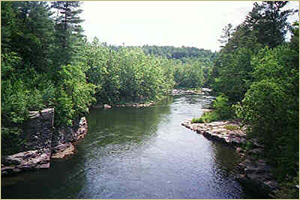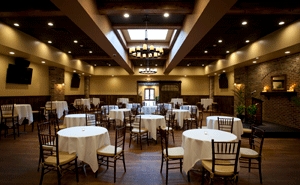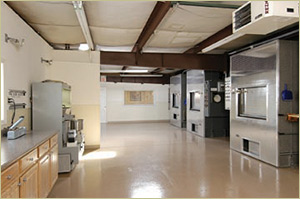 Cremation service has recently become the predominant choice for American families when experiencing the loss of a loved one. People choose cremation for a variety of philosophic, economic and environmental reasons. When considering cremation in the Philadelphia, PA area, becoming more educated regarding cremation and the options associated with it will help you gain confidence in your decision-making process. You will eventually discover that Delaware Valley Cremation Center is the national standard setter of best practices regarding proper policies and procedures and state-of-the-art facilities and equipment when it comes to cremation service providers. (Most other “cremation services” advertising in the Philadelphia, PA region do not even own or operate a crematory.) Knowledge is the key to gaining confidence and eventually peace of mind. Our open-door policy of transparency along with our knowledgeable, experienced and empathetic team will help provide you with the information, care and confidence you deserve. But don’t just take it from us. Investigate and compare us to other cremation service providers in the Philadelphia, PA area, and you will easily be able to understand and appreciate the differences.
Cremation service has recently become the predominant choice for American families when experiencing the loss of a loved one. People choose cremation for a variety of philosophic, economic and environmental reasons. When considering cremation in the Philadelphia, PA area, becoming more educated regarding cremation and the options associated with it will help you gain confidence in your decision-making process. You will eventually discover that Delaware Valley Cremation Center is the national standard setter of best practices regarding proper policies and procedures and state-of-the-art facilities and equipment when it comes to cremation service providers. (Most other “cremation services” advertising in the Philadelphia, PA region do not even own or operate a crematory.) Knowledge is the key to gaining confidence and eventually peace of mind. Our open-door policy of transparency along with our knowledgeable, experienced and empathetic team will help provide you with the information, care and confidence you deserve. But don’t just take it from us. Investigate and compare us to other cremation service providers in the Philadelphia, PA area, and you will easily be able to understand and appreciate the differences.
Cremation Services and Memorial Tribute Gatherings
Cremation offers unlimited options regarding services and memorialization. Service arrangements may be kept very basic whereas we simply help take care of the cremation only, or they may involve options such as a gathering in one of our gathering spaces, your place of worship, a cemetery, or even a local restaurant. At Delaware Valley Cremation Center, we recommend memorial tribute gathering options at our popular State Room event center The State Room in Philadelphia, PA (delvalcremation.com) following the cremation process. This allows family and friends to gather, reminisce and honor a loved one’s life, legacy, and contribution to the world in an inviting and comfortable setting, and better begin the grieving process. We’re here to serve as a relaxed, attentive resource to help you appropriately design cremation service and memorialization options that sensibly complement your individual needs and values. Our goal is to go above and beyond to provide you with what you decide to be an appropriate and seamless cremation and memorialization experience.
Choosing a Cremation Provider
One of the most important and irreversible decisions you will be making is where and how the actual cremation will take place. Which cremation service provider near Philadelphia, PA should you choose?
We, at Delaware Valley Cremation Center in Philadelphia, PA, are proud to provide complete confidence and peace of mind to the families we serve through our nationally recognized, state-of-the-art cremation policies and procedures. Our caring and attentive team has been providing unparalleled care and assistance to those looking for cremation services in the Philadelphia, PA area for 30 plus years. We take painstaking care as we ensure no detail is overlooked and that the highest standards for the cremation process are carefully and transparently adhered to.
In order to achieve the complete peace of mind you deserve, you’ll need to have satisfactory answers to a few key questions.
- Do they perform their own cremations? If not, who performs the cremations for them?
- Can you tour and inspect the cremation facility?
- Can you and/or other family members attend the cremation?
- Do they provide you with a written copy of their operational policies and procedures?
- What is the average time between receiving the deceased and the completion of the cremation?
- What is their procedure to track the remains throughout the cremation process and verify the identity of the cremated remains following cremation?
- What is their policy in reference to disposition of prosthetics, artificial joint replacements, etc., and other non-combustible material?
- How are the cremated remains returned? What is their policy regarding holding of the cremated remains after the cremation is completed?
- Will they give you references of other families who have used their services?
- Are they a member of the Cremation Association of North America? If not, do they adhere to some other code of cremation ethics?
- Have their crematory operators been certified by a recognized organization, such as CANA, in the proper use of the cremation equipment and care of human remains?
In your search for a quality cremation provider near Philadelphia, PA that is knowledgeable, procedurally transparent, respectful and considerate, please call or visit Delaware Valley Cremation Center in Philadelphia, PA. We are available 24 hours a day by phone at 215-543-9339.
History of Cremation
Scholars today quite generally agree that cremation probably began in any real sense during the early Stone Age — around 3000 B.C. — and most likely in Europe and the Near East. In North America, modern cremation didn’t really start until the late 1800’s.
During the late Stone Age cremation began to spread across northern Europe, as evidenced by particularly informative finds of decorative pottery urns in western Russia among the Slavic peoples.
With the advent of the Bronze Age — 2500 to 1000 B.C. — cremation moved into the British Isles and into what is now Spain and Portugal. Cemeteries for cremation developed in Hungary and northern Italy, spreading to northern Europe and even Ireland.
In the Mycenaean Age — circa 1000 B.C. — cremation became an integral part of the elaborate Grecian burial custom. In fact, it became the dominant mode of disposition by the time of Homer in 800 B.C. and was actually encouraged for reasons of health and expedient burial of slain warriors in this battle-ravaged country.
Following this Grecian trend, the early Romans probably embraced cremation some time around 600 B.C. and it apparently became so prevalent that an official decree had to be issued in the mid 5th Century against the cremation of bodies within the city.
By the time of the Roman Empire — 27 B.C. to 395 A.D. — it was widely practiced, and cremated remains were generally stored in elaborate urns, often within columbarium-like buildings.
Prevalent though the practice was among the Romans, cremation was rare with the early Christians who considered it pagan and in the Jewish culture where traditional sepulcher entombment was preferred.
However, by 400 A.D., as a result of Constantine’s Christianization of the Empire, earth burial had completely replaced cremation except for rare instances of plague or war, and for the next 1,500 years remained the accepted mode of disposition throughout Europe.
Modern cremation, as we know it, actually began only a little over a century ago, after years of experimentation into the development of a dependable chamber. When Professor Brunetti of Italy finally perfected his model and displayed it at the 1873 Vienna Exposition, the cremation movement started almost simultaneously on both sides of the Atlantic.
In the British Isles, the movement was fostered by Queen Victoria’s surgeon, Sir Henry Thompson. Concerned with hazardous health conditions, Sir Henry and his colleagues founded the Cremation Society of England in 1874. The first crematories in Europe were built in 1878 in Woking, England and Gotha, Germany.
Meanwhile in North America, although there had been two recorded instances of cremation before 1800, the real start began in 1876 when Dr. Julius LeMoyne built the first crematory in Washington, Pennsylvania.
In 1884 the second crematory opened in Lancaster, Pennsylvania and, as was true of many of the early crematories, it was owned and operated by a cremation society. Other forces behind early crematory openings were Protestant clergy who desired to reform burial practices and the medical profession concerned with health conditions around early cemeteries.
Crematories soon sprang up in Buffalo, New York, Pittsburgh, Cincinnati, Detroit and Los Angeles. By 1900, there were already 20 crematories in operation, and by the time that Dr. Hugo Erichsen founded the Cremation Association of America in 1913, there were 52 crematories in North America and over 10,000 cremations took place in that year.
In 1975, the name was changed to the Cremation Association of North America to be more indicative of the membership composition of the United States and Canada. At that time, there were over 425 crematories and nearly 150,000 cremations.
In 2014, there were more than 3000 crematories in the United States performing over 1.2 million cremations per year (47% of all deaths in the US), and as of 2015, cremation has overtaken earth burial as the predominant choice for all Americans.
It is projected that by 2030 just over 70% of all American families experiencing a death will choose cremation.


